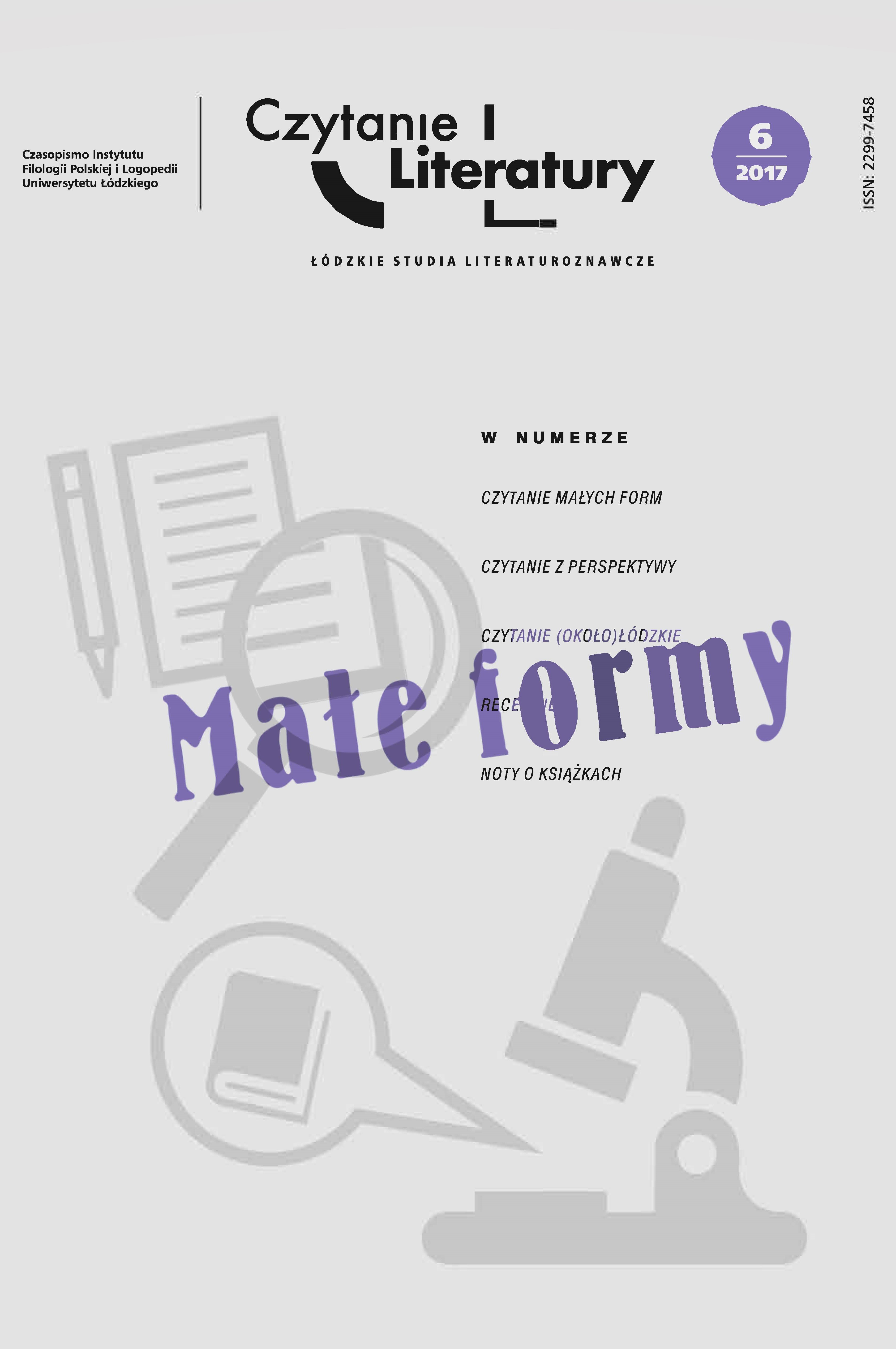Faith in the Creative Power and Dynamic Concept of Existence in the Novellas by Stefan Grabiński – on the Examples of The Realm and Grot, the Engine-Driver
DOI:
https://doi.org/10.18778/2299-7458.06.12Keywords:
Stefan Grabiński, creative power, élan vital, madness, the psychological structure of the characterAbstract
In his short prose, Stefan Grabiński often referred to issues connected with fields related to literature in order to deepen the psychological portrait of the characters he created. In the novellas I selected, the author refers to philosophy (including Bergson’s theories) and psychoanalysis, which allows him to create credible and true-tolife figures whom he, at the same time, places in worlds that are plastic enough to become the arena of uncanny stories. Both The Realm and Grot, the Engine-Driver seem to be evidence of Grabiński’s prosaic genius, which he could demonstrate to the full in his novellas. Therefore, the article that I present is a peculiar reconnaissance, aimed at emphasising the virtuosity of this Polish classical writer of horror stories, and at pointing out his high competences in the field of constructing complex and true-to-life characters.
Downloads
References
Grabiński S., Z mojej pracowni. Opowieść o „Maszyniście Grocie”. Dzieje noweli – przyczynek do filozofii tworzenia, „Skamander” 1920, nr 2.
Google Scholar
Grabiński S., Dziedzina, [w:] S. Grabiński, Szalony pątnik, Warszawa 2014.
Google Scholar
Grabiński S., Wyznania, [w:] S. Grabiński, Wichrowate linie, Kraków 2012.
Google Scholar
Grabiński S., Maszynista Grot, [w:] S. Grabiński, Demon ruchu, Warszawa 2013.
Google Scholar
Grudnik K., Tożsamość katoptryczna w nowelistyce Stefana Grabińskiego, „Litteraria Copernicana” 2013, nr 1 (11).
Google Scholar
Hutnikiewicz A., Stefan Grabiński czyli jak się pisze „dreszczowce”, [w:] Prozaicy dwudziestolecia międzywojennego. Sylwetki, red. B. Faron, Warszawa 1974.
Google Scholar
Hutnikiewicz A., Twórczość literacka Stefana Grabińskiego, Toruń 1959.
Google Scholar
Krzyńska-Nawrocka E., Ciemne terytoria. Człowiek i świat w prozie Stefana Grabińskiego, Kraków 2012.
Google Scholar
Mazurkiewicz A., Nowelistyka Stefana Grabińskiego wobec tradycji literatury grozy, „Litteraria Copernicana” 2013, nr 1 (11).
Google Scholar
Płomieński J.E., Suweren polskiej fantastyki literackiej, [w:] J.E. Płomieński, Twórcy bez masek, Warszawa 1956.
Google Scholar
Travis C., Wade C., Psychologia. Podejścia oraz koncepcje, Poznań 1999.
Google Scholar
Downloads
Published
How to Cite
Issue
Section
License

This work is licensed under a Creative Commons Attribution-NonCommercial-NoDerivatives 4.0 International License.










